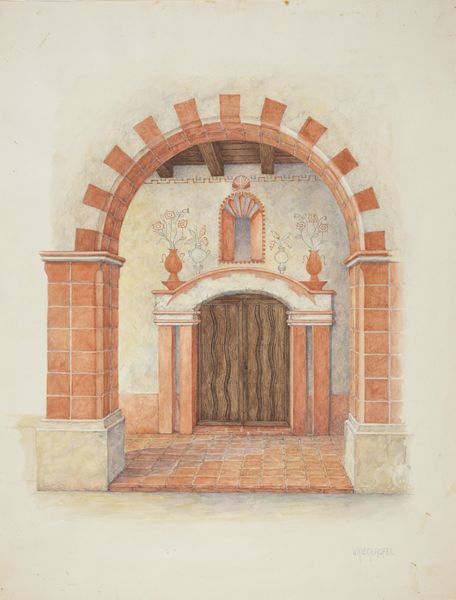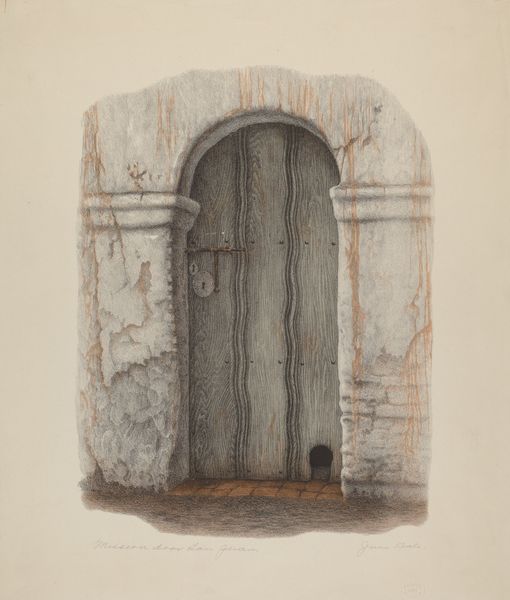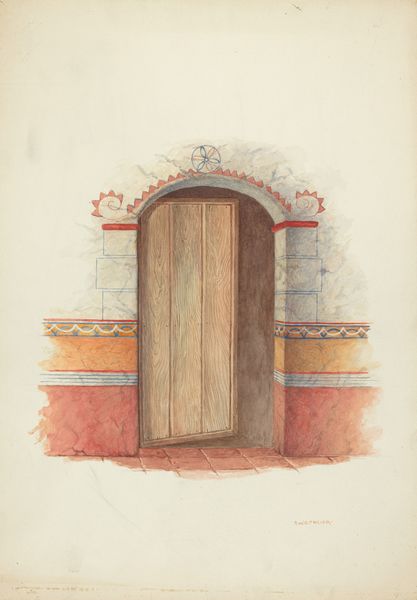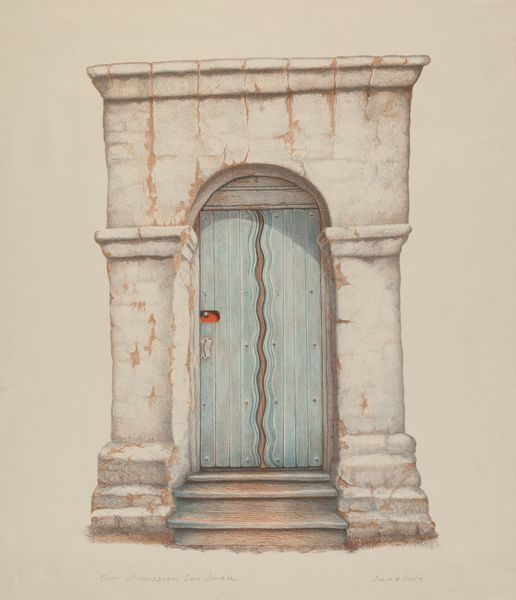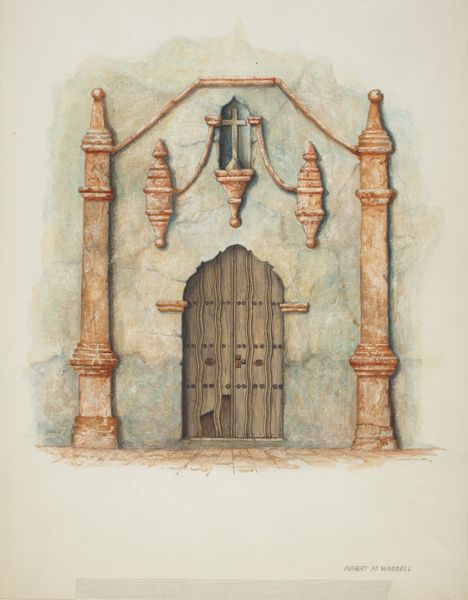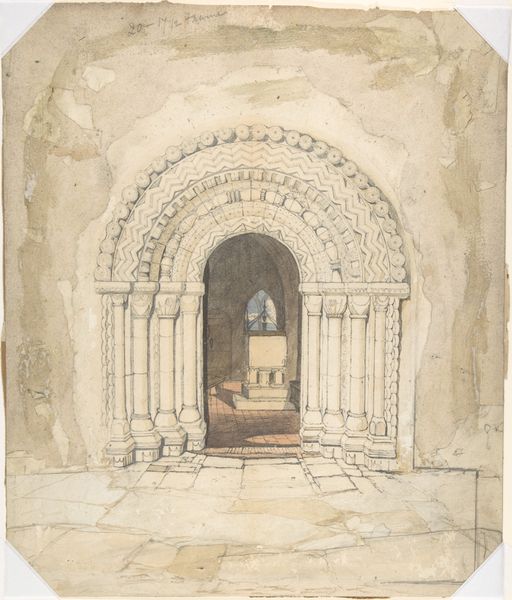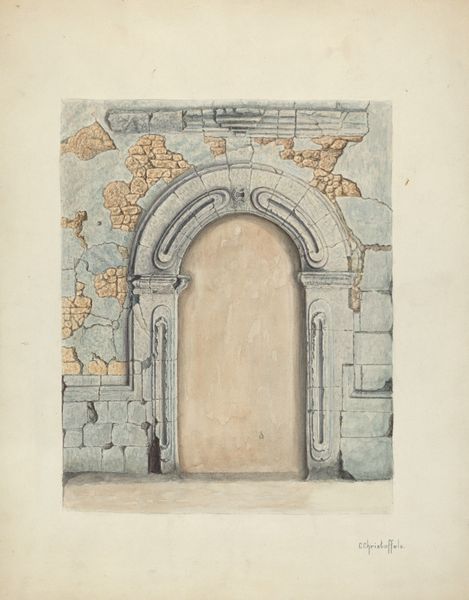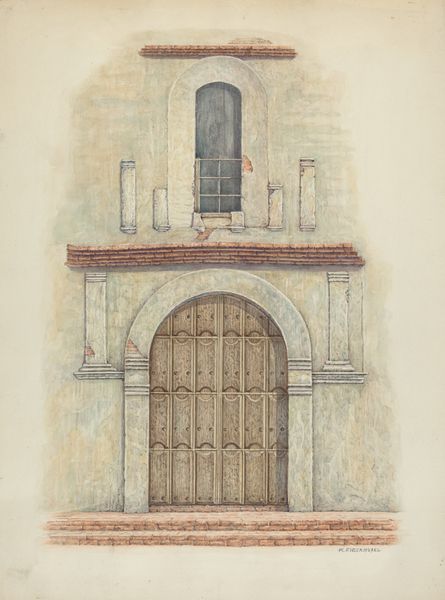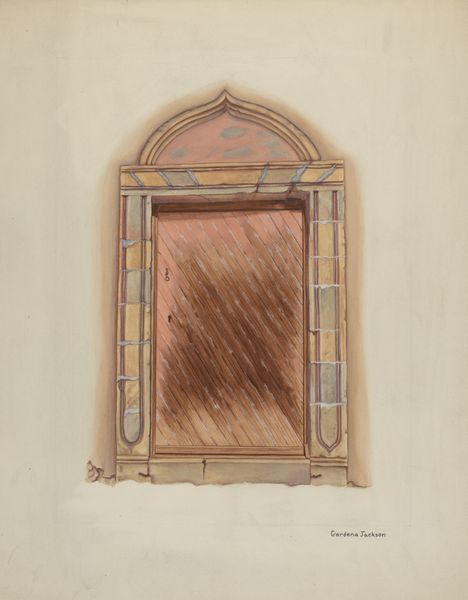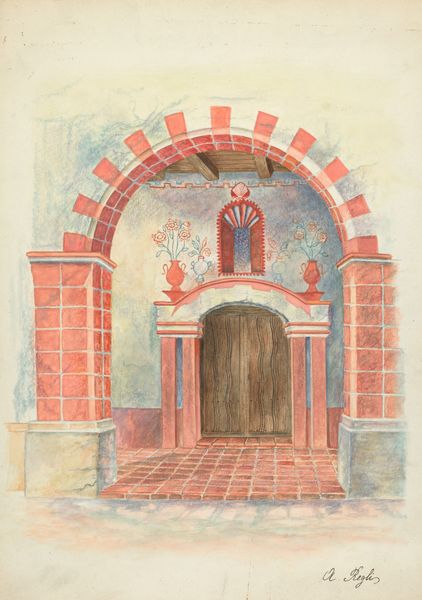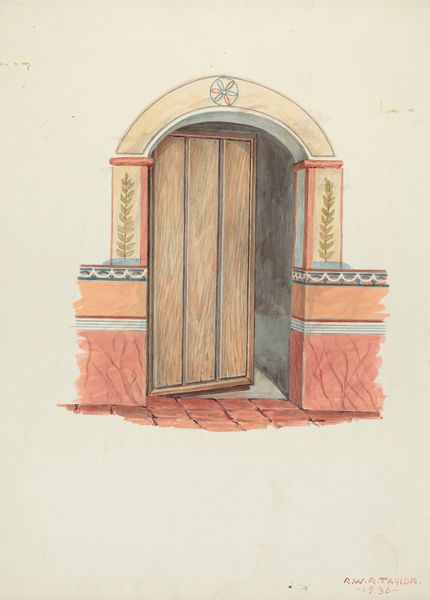
drawing
#
drawing
#
aged paper
#
toned paper
#
sculpture
#
historic architecture
#
unrealistic statue
#
carved into stone
#
underpainting
#
watercolor
#
historical font
#
statue
Dimensions: overall: 35.6 x 24.4 cm (14 x 9 5/8 in.) Original IAD Object: none given
Copyright: National Gallery of Art: CC0 1.0
Curator: Welcome. Before us hangs "Doorway, Stone," a watercolor drawing completed by Juanita Donahoo in 1939. What are your initial thoughts? Editor: Well, immediately there’s this sense of arrested potential, don’t you think? It’s like looking at a relic of the past, a gateway to…somewhere… rendered static. Curator: Static is a good word. Donahoo's restrained palette accentuates the textures: the rough-hewn blocks, the chipped façade around the doorway itself. The formal arrangement invites a deep viewing into the layers of construction of the doorway. Editor: Absolutely, and consider the historical context: 1939. Europe's teetering on the brink of war, the U.S. is clawing its way out of the Depression. Could this image be an allegorical meditation on access, opportunity, the promise of a 'doorway' blocked? Curator: I see your point, yet note the artist’s detailed application of line and light to draw our eyes towards the central opening and to provide its formal architecture. The formal composition generates a captivating tension between decay and ideal form. It begs us to look closer and longer, encouraging our visual inquiry. Editor: A 'looking closer and longer' is the activist approach, but also what’s within. What stories and barriers does this seemingly benign structure embody when we consider class, power, privilege in an historical lens? Access to architectural infrastructure mirrors who is prioritized within society. Curator: Undoubtedly, socio-historical interpretations enrich our experience. The doorway, considered simply as an image, possesses the formal visual architecture to spark endless discourse as it stands—complete, insufficient and, frankly, enigmatic. Editor: Well said. For me, Donahoo's piece speaks to a broader struggle – that many doorways remain obstructed, and questions whether historical infrastructure mirrors or actively resists present day progress. Curator: And for me, that Donahoo masterfully portrays the doorway’s physical presence for all.
Comments
No comments
Be the first to comment and join the conversation on the ultimate creative platform.


